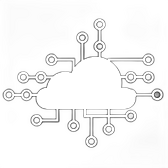-
Using ArgoCD, Helm, and SOPS for Secure Kubernetes Deployments
As Kubernetes becomes the standard for container orchestration, managing and securing your Kubernetes deployments is critical. ArgoCD, Helm, and SOPS (Secret Operations) can be combined to provide a powerful, secure, and automated solution for managing Kubernetes applications. This guide provides a detailed overview of how to integrate ArgoCD, Helm, and SOPS to achieve secure GitOps…
-
ArgoCD vs. Flux: A Comprehensive Comparison
ArgoCD and Flux are two of the most popular GitOps tools used to manage Kubernetes deployments. Both tools offer similar functionalities, such as continuous delivery, drift detection, and synchronization between Git repositories and Kubernetes clusters. However, they have different architectures, features, and use cases that make them suitable for different scenarios. In this article, we’ll…
-
How to Launch Zipkin and Sentry in a Local Kind Cluster Using Terraform and Helm
In modern software development, monitoring and observability are crucial for maintaining the health and performance of applications. Zipkin and Sentry are two powerful tools that can be used to track errors and distributed traces in your applications. In this article, we’ll guide you through the process of deploying Zipkin and Sentry on a local Kubernetes…
-
Kubernetes Setup Guide: Deploying a Kubernetes Cluster from Scratch
Kubernetes, also known as K8s, is an open-source container orchestration platform that automates the deployment, scaling, and management of containerized applications. It’s the de facto standard for running production-grade containerized applications, providing powerful features like automatic scaling, rolling updates, and self-healing capabilities. This guide will walk you through setting up a Kubernetes cluster from scratch,…
-
How to Deploy a Helm Chart in Minikube Using Terraform
Minikube is a lightweight Kubernetes implementation that runs a single-node cluster on your local machine. It’s an excellent environment for testing and developing Kubernetes applications before deploying them to a larger, production-level Kubernetes cluster. Helm is a package manager for Kubernetes, and Terraform is an Infrastructure as Code (IaC) tool that can automate the deployment…
-
How to Deploy Helm Charts on Google Kubernetes Engine (GKE)
How to Deploy Helm Charts on Google Kubernetes Engine (GKE) Helm is a package manager for Kubernetes that simplifies the process of deploying, upgrading, and managing applications on your Kubernetes clusters. By using Helm charts, you can define, install, and upgrade even the most complex Kubernetes applications. In this article, we’ll walk through the steps…
-
Setting Up Minikube on Ubuntu: A Step-by-Step Guide
Introduction Minikube is a powerful tool that allows you to run Kubernetes locally. It provides a single-node Kubernetes cluster inside a VM on your local machine. In this guide, we’ll walk you through the steps to set up and use Minikube on a machine running Ubuntu. Prerequisites Step 1: Installing Minikube To begin with, we…
-
Kubernetes Pod Placement: The Power of Node Selector and Node Affinity
1. Introduction to Kubernetes: Brief Overview:Kubernetes, commonly referred to as “K8s,” is an open-source container orchestration platform designed to automate the deployment, scaling, and management of containerized applications. Originating from a project by Google, Kubernetes has quickly grown in popularity and is now maintained by the Cloud Native Computing Foundation (CNCF). Purpose:In today’s digital landscape,…
